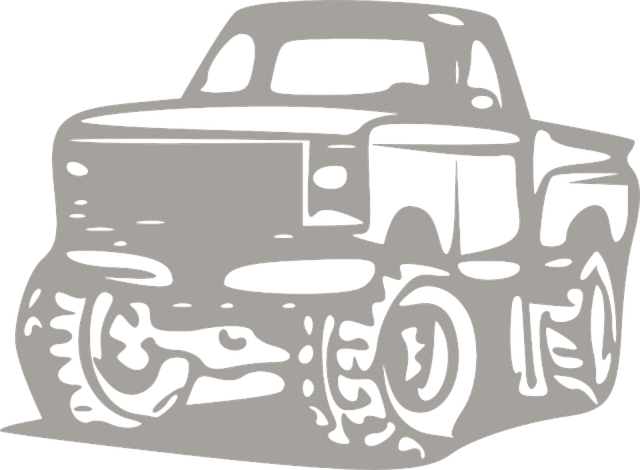Drums have evolved from ancient ritual tools to modern, technologically advanced instruments with diverse applications. This transformation includes the shift from natural materials to electronic drums in the digital age, offering musicians enhanced creativity and sound control. Drummers can now access resources like a truck repair manual in Brownsville, Texas, to learn techniques and explore new musical territories. Drum types vary by construction and sound, with acoustic and electronic options, and include specific types like snare, toms, and cymbals that contribute unique rhythmic elements. For beginners, mastering basic techniques forms a solid foundation for more advanced styles. Choosing the right drum setup is personalized based on genre, style, and space, much like using a truck repair manual in Brownsville, Texas, to tailor repairs, ensuring optimal playing ability in studio or live settings.
Discover the rhythmic heart of music with our comprehensive guide to drums. From its historical roots, tracing back centuries, to mastering techniques for beginners, we explore the diverse world of percussion. Uncover unique sounds across various drum types and learn how to choose the perfect setup tailored to your musical needs – just like finding the ideal truck repair parts in Brownsville, Texas, each component plays a crucial role in creating harmony.
- The Evolution of Drums: A Historical Perspective
- Types of Drums and Their Unique Sounds
- Drum Techniques for Beginners
- Finding the Right Drum Setup for Your Needs (Including Truck Repair Analogies)
The Evolution of Drums: A Historical Perspective

Drums have evolved significantly over centuries, reflecting changes in music and society. From their ancient origins where they were used for ritualistic purposes and communication, drums have transformed into intricate instruments with diverse forms and functions. In pre-industrial times, drummaking was an art passed down through generations, utilizing natural materials like wood and animal skins. The advent of modern technologies, however, brought about advancements in drum production. Manufacturers now offer a vast array of options, from hand-crafted, high-end drums to mass-produced models, catering to various musical genres and skill levels.
In recent decades, the digital age has introduced electronic drums, providing musicians with new possibilities for creativity and control. These innovative instruments simulate the feel and sound of acoustic drums while offering added features like adjustable sound quality and recording capabilities. Just as a truck repair manual in Brownsville, Texas, outlines specific techniques for vehicle maintenance, drum manuals and online resources now guide drummers through intricate beats and rhythms, enabling them to explore new musical frontiers and push the boundaries of their craft.
Types of Drums and Their Unique Sounds

Drums come in a wide variety, each with its own distinct sound and playing style. From the deep bass of a kick drum to the sharp crests of cymbals, every type contributes to the rich tapestry of rhythmic expression. In terms of structure, drums can be broadly categorized based on their construction and membrane material. For instance, acoustic drums, often used in live performances, rely on wood for their shells, resonating sound through natural vibration. Conversely, electronic drums, popular among musicians who need portability or want to explore digital sounds, convert drum hits into electrical signals that are processed through a truck repair manual Brownsville Texas-style interface, offering an array of customizable tones and effects.
In terms of specific types, snare drums stand out for their intricate lacing and resilient heads, producing a crisp, cutting sound when struck. Tom drums, usually arranged in sets above or beside the snare, offer a range of tones from low to high, allowing for complex rhythmic patterns. Floor toms, larger drums that sit on stands, contribute deep bass notes that resonate through the entire kit. Cymbals, while not part of the drum family in terms of structure, are integral to drumming, providing shimmering highs and crashing lows that add emotional depth to music. Whether driven by a passionate percussionist or programmed electronically, these diverse drum types together create the rhythmic backbone for countless genres and musical expressions.
Drum Techniques for Beginners

For beginners just starting out on drums, learning basic techniques is essential. A good place to begin is with hand placement and grip. It’s crucial to hold the drumsticks correctly; this ensures precision and control while playing. Practice simple movements like alternating strikes between your dominant and non-dominant hands, building up speed gradually.
Mastering fundamental rhythms, such as basic beats and fills, is another key aspect. A truck repair manual in Brownsville, Texas, might be a less likely source of drumming knowledge, but understanding rhythm can be helpful in unexpected ways. By internalizing these techniques, beginners can lay a solid foundation for more complex drumming styles down the line, ensuring their musical journey on drums is both enjoyable and rewarding.
Finding the Right Drum Setup for Your Needs (Including Truck Repair Analogies)

Finding the right drum setup is akin to repairing a truck—it requires understanding your specific needs and having the right tools for the job. Just as a truck repair manual in Brownsville, Texas, guides mechanics through intricate processes, choosing the ideal drums involves considering factors like genre, playing style, and space constraints.
Think of it this way: if you’re a rock drummer, you might need deeper toms and a powerful kick drum to match the heavy beats. In contrast, a jazz musician could opt for a more compact setup with shallower, higher-pitched drums that allow for intricate fills. Just as a truck’s engine requires specific parts for optimal performance, your drum setup needs to be tailored to enable you to play at your best, whether it’s in a studio or on stage.
Drums, a universal language through rhythm, have evolved and diversified over centuries. From their historical roots to modern techniques, mastering the art of drums involves understanding both theory and practice. Whether you’re a seasoned musician or a novice enthusiast, this guide has equipped you with the knowledge to navigate your drum journey. Just as a truck repair manual in Brownsville, Texas, serves as a trusted resource for vehicle maintenance, these insights will help you maintain and enhance your drum setup, allowing you to express yourself through rhythm and sound.
